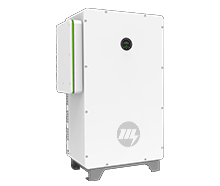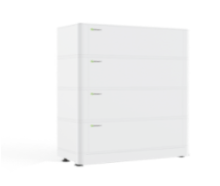Power your life with our
energy storage inverters
Unleash the full potential of renewable energy
Explore Our Energy Storage Inverters
MOKOEnergy 3~6kW

Single-phase inverter | Dual-Channel MPPT
Hybrid off-grid Energy Storage System
MOKOEnergy 4~10kW

Three-phase inverter | Dual-Channel MPPT
Hybrid Off-grid Energy Storage System
MOKOEnergy 2.5~6kW

Single-phase inverter | Dual-Channel MPPT
Back-up Energy Storage Inverter
MOKOEnergy 3~10kW

Three-phase inverter | Dual-Channel MPPT
Back-up Energy Storage Inverter
MOKOEnergy 50~100kW

Three-phase inverter | Multiple-Channel MPPT
MOKOEnergy 3~5kW

Single-phase inverter | High Frequency
Off-grid Inverter
Supports Up to 6 units in Parallel Operation
MOKOEnergy 4~12kW

Single-phase inverter | Mains Frequency
Off-grid Inverter
Built-in Mains Frequency Transformer
Residential Energy Storage Inverter
MOKOEnergy 3~6kW

Single-phase inverter | Dual-Channel MPPT
Hybrid off-grid Energy Storage System
MOKOEnergy 4~10kW

Three-phase inverter | Dual-Channel MPPT
Hybrid Off-grid Energy Storage System
MOKOEnergy 2.5~6kW

Single-phase inverter | Dual-Channel MPPT
Back-up Energy Storage Inverter
MOKOEnergy 3~10kW

Three-phase inverter | Dual-Channel MPPT
Back-up Energy Storage Inverter
Commercial Energy Storage Inverter
MOKOEnergy 50~100kW

Three-phase inverter | Multiple-Channel MPPT
Off-Grid Energy Storage Inverter
MOKOEnergy 3~5kW

Single-phase inverter | High Frequency
Off-grid Inverter
Supports Up to 6 units in Parallel Operation
MOKOEnergy 4~12kW

Single-phase inverter | Mains Frequency
Off-grid Inverter
Built-in Mains Frequency Transformer
Our Energy Storage Inverter are Used for

New Energy Generation Industry
In solar energy, wind power, and other new energy generation systems, the electricity is stored in batteries to improve energy utilization efficiency.

Industrial Manufacturing Industry
Provides stable power supply for industrial manufacturing to ensure the normal operation of production equipment and prevent production interruptions caused by power outages and other reasons.

Transportation Industry
Used in the construction of electric vehicle charging stations to smooth out energy fluctuations during the charging process by storing electricity and achieving smooth charging.

Residential and Commercial Building Industry
Serves as a backup power supply to guarantee power supply during power outages, while also enabling energy storage and power regulation for solar photovoltaic power generation systems.

Energy Internet Industry
Achieves interconnection and optimized utilization of different types of energy, promoting clean and intelligent development of energy.
How Does Energy Storage Inverter Work?
The working principle of an energy storage inverter is basically to extract electricity from the energy storage system (such as a battery), convert DC electricity into AC electricity, and output it to the grid or load. When the electricity stored in the energy storage system is needed, the power storage inverter converts DC electricity into AC electricity, so that it can be supplied to the load or input into the grid. At the same time, the energy storage inverter can monitor and control the state of the battery, ensuring that they operate under optimal conditions and protecting the system from issues such as overloading or over-discharging. The electricity storage inverter can also be integrated with other energy management systems to achieve more intelligent management and control of energy.

Complementary Products for Energy Storage Inverters
Why MOKOEnergy's Energy Storage Inverter can Dominate the Market

Bidirectional conversion capability
Able to convert DC electricity into AC electricity, and vice versa.

High efficiency
Dual MPPT tracking, high power density, maximum efficiency of up to 98.8%.

High stability
Adopting high-quality components, a reliable control system, and a BMS management system.

Multiple Protection
Overcurrent protection, overvoltage protection, under-voltage protection, and short-circuit protection.

Flexible system design
Modular scalability, wide battery capacity, and multiple batteries.

Easy operation
Simple installation, integrated web interface, can be configured, monitored, and upgraded remotely.

Reliable power supply
Ultra-high overload capacity and the IP65 protection level ensures operation even in extreme environments.

High-quality products
Has passed ISO9001:2015, ISO13485, CE, UL, TUV, FCC, etc.
Contract Turnkey Service
Fully integrated R&D, design, supply chain, manufacturing, automated testing, and applications support.

Design and Development
Design and develop energy storage inverters that meet customer specifications and requirements.

Production and Manufacturing
Produce and manufacture energy storage inverters that meet customer requirements and undergo quality control.

Customization
Customize special energy storage inverter products according to customer requirements, includ-ing special power and voltage levels, as well as the appearance and size of the energy storage inverter.

Testing and Certification
Conduct strict testing and certification to ensure the quality and performance of the energy storage inverter meet international and industry standards.

Technical Support and After-Sales Service
Provide technical support and after-sales services for customers, including installation, maintenance, and troubleshooting.
FAQs of Energy Storage Inverter
An energy storage inverter is a piece of equipment that transforms the direct current (DC) power from an energy storage system, like a battery, into alternating current (AC) electricity that can be utilized to operate electrical devices or fed back into the power grid.
Energy storage inverters enable the efficient and optimal utilization of renewable energy sources, such as wind or solar power, by storing surplus energy and discharging it when required. Additionally, they provide emergency power backup during power outages or other emergencies.
The right storage inverter for your needs will depend on factors such as the size of your energy storage system, the amount of power you need to supply, and the type of electrical devices you will be using. Getting advice from a certified expert can ensure that you choose the appropriate inverter that suits your particular requirements.
The lifespan of a solar energy inverter can vary depending on factors such as usage, maintenance, and the quality of the device. In general, a well-maintained energy storage inverter can last for 10-15 years or more.
While it is possible to install an energy storage inverter yourself, it is generally recommended to hire a qualified professional to ensure that the device is installed correctly and safely. Additionally, professional installation may be required to meet certain building or electrical codes.
A grid-tied inverter is designed to work in conjunction with the electrical grid, while an off-grid inverter is designed to operate independently of the grid, typically with a battery storage system.
The maximum efficiency of a power storage inverter can vary, but some models can achieve efficiencies of up to 98.8%.
MPPT (maximum power point tracking) is a feature that enables the inverter to find and operate at the optimal voltage and current to maximize the power output of the solar panels. It is important because it can significantly increase the energy yield of the system.
Yes, some energy storage inverters are compatible with different types of batteries, such as lead-acid and lithium-ion.
Yes, some energy stored inverters have the capability to supply both AC and DC loads.
Some important safety features to look for include overcurrent protection, overvoltage protection, under-voltage protection, short-circuit protection, and thermal protection.
Many energy storage inverters come with built-in monitoring systems that can provide real-time data on the system’s performance, including energy production and battery state of charge. Our inverters can also be connected to monitoring software.
Routine maintenance for an energy storage inverter typically includes cleaning the unit, checking for loose connections, and inspecting the battery for signs of wear or damage. Regular inspection of the inverter by a professional is also recommended.




